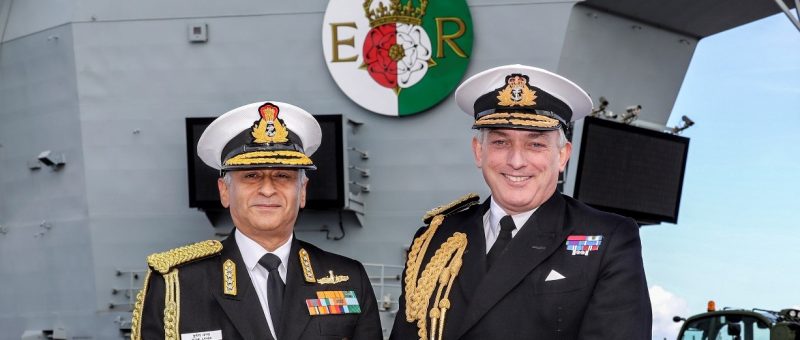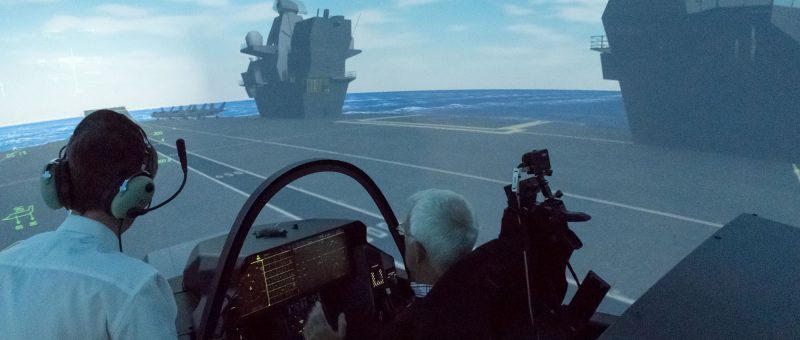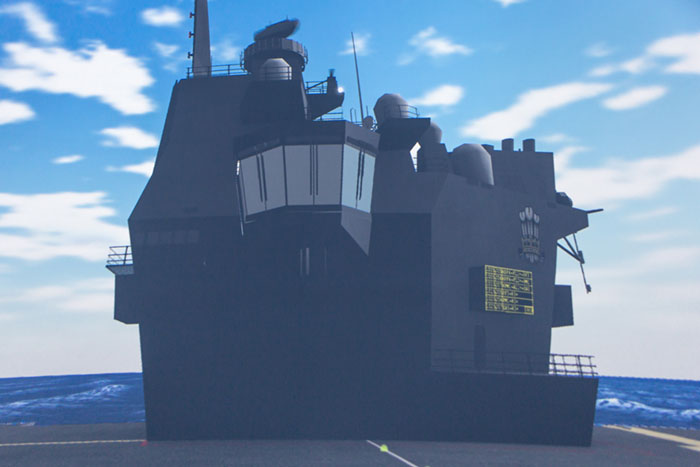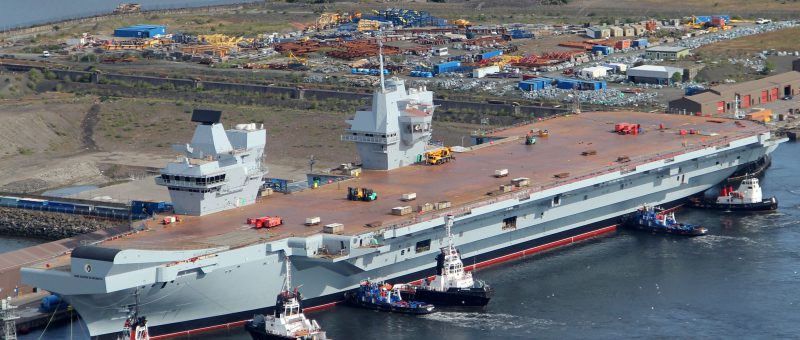The commander and the highest-ranking officer in the Indian Navy, Admiral Sunil Lanba was welcomed aboard the HMS Queen Elizabeth, one of UK’s new aircraft carriers. The Indian Navy and the Royal Navy have formed the Carrier Capability Partnership with the aim of developing joint capabilities and assisting India’s carrier programme.

First Sea Lord Admiral Sir Philip Jones commented: “I am sure we will be able to develop further synergies in our respective future carrier strike capabilities. The important thing is that by developing these capabilities in tandem, we build in a level of interoperability. When combined with our regular operational interaction and exercises such as the hugely valuable Konkan series there can be no doubt we will be increasingly well placed to work together across the full spectrum of Naval activity – from disaster relief to high end warfighting.”
Weighing in at 65,000-tonnes, HMS Queen Elizabeth is longer than the Houses of Parliament and her flight deck could accommodate three football pitches; she is the biggest warships ever built for the Royal Navy. Still under construction, the second of the Queen Elizabeth class carriers, HMS Prince of Wales will enter active service from 2020.

Admiral Sunil Lanba was given a tour of HMS Queen Elizabeth and introduced to some of the many advanced features of Britain’s new carriers. Perhaps the most distinctive aspect are the twin islands and especially the futuristic form of the aft island which serves as a flight control tower. Dubbed the “Flyco”, the innovative air traffic control room was designed and manufactured by UK’s Tex Special Projects.
The first aircraft carrier and largest warship ever to be built in India for the Indian Navy is the INS Vikrant (meaning “courageous”). Design work began in 1999 and construction at Cochin Shipyard Limited (CSL) is expected to be completed by late 2020. India’s Pratex Power Vision Pvt Ltd and Tex Special projects are designing and managing the installation of the ultra-high specification glazing and ancillaries on the INS Vikrant.

INS Vikrant under construction at CSL, Cochin, India.Main picture: The Chief of the Indian Naval Staff Admiral Sunil Lanba and The Chief of Naval Staff, The First Sea Lord Admiral Sir Philip Jones aboard HMS Queen Elizabeth.






